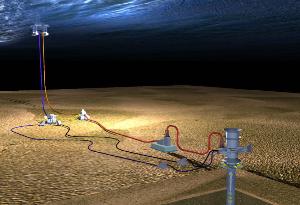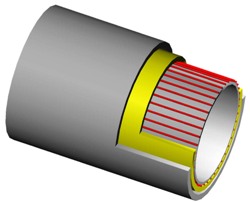Liquid natural gaz (LNG) transfer pipeline is cost-effective for the impact on the Environment. Many companies such as Greengage, Total or ITP (INTERPIPE) have been working on impact assessments because of public opposition, safety, security and environmental concerns. Pipeline innovators like ITP are working on building environmental friendly solutions to allow transportation of liquid gas.
Pipelines
Because of the transportation of LNG from the offshore terminals or offloading platforms to the storage tanks, the cryogenic subsea pipelines are since 2007 a secure mean of transportation. The pipe-in-pipe technology allows the cryogenic fluid to be transferred from the extraction point to the loading terminal. The invar inner pipes have a low expansion coefficient which is the ideal material to be in contact with liquefied gas. The outer layers provide enough insulation and protection from the external environment such as corrosion, pressure or impacts, for the inner pipes to be reliable. ITP LNG pipe technology has been qualified “fit for service” by DNV (DNV Certificate of Fitness for Service) and has been co-sponsored by five major oil and gas companies.
Risks
However; it’s because of the reputation that the oil and gas companies have towards environmental issues that the concerns aren’t gone for good. Even though these companies take extra precautions on making sure that the technology can withhold any disaster, environment impact assessments are necessary to ensure safety.
Moreover, the complexity of each operation makes it difficult for risk assessments to be overwritten by anyone. Onshore, the installation of cryogenic pipe-in-pipe, which is assembled one by one can be overviewed by third parties but once carried out to sea and installed on the sea floor, monitoring risk becomes a real challenge.
Environment
The transport by pipeline is very efficient regarding most of the environmental indicators because the transportation of compressed gas by truck has almost always the highest impacts on the environment, as it is always the most inefficient mean of transportation. Many specialists agree that moving storage or fuel needs energy. Taking in account the cost of the impact of engine transportation to the environment, Pipe-line transportation has a high energy and environment preservation ratio.



